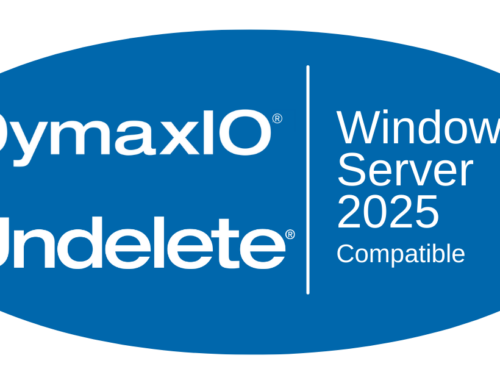If you’ve ever wondered about the exact business value that Condusiv® I/O reduction software provides to your systems, the latest “time saved” reporting does exactly that.
Prior to V-locity® v6.2 for virtual servers and Diskeeper® 16 for physical servers and endpoints, customers would conduct expansive before/after tests to extract the intrinsic performance value, but struggled to extract the ongoing business benefit over time. This has been especially true during annual maintenance renewal cycles when key stakeholders need to be “re-sold” to allocate budget for ongoing maintenance, or push new licenses to new servers.
The number one request from customers has been to better understand the ongoing business benefit of I/O reduction in terms that are easily relatable to senior management and makes justifying the ROI painless. This “holy grail” search on part of our engineering team has led to the industry’s first-ever “time saved” dashboard for an I/O optimization software platform.
When Condusiv software proactively eliminates the surplus of small, fractured writes and reads and ensures more “payload” with every I/O operation, the net effect is fewer write and read operations for any given workload, which saves time. When Condusiv software caches hot reads within idle, available DRAM, the net effect is fewer reads traversing the full stack down to storage and back, which saves time.
In terms of benefits, the new dashboard shows:
- How many write I/Os are eliminated by ensuring large, clean, contiguous writes from Windows
- How many read I/Os are cached from idle DRAM
- What percentage of write and read traffic is offloaded from underlying SSD or HDD storage
- Most importantly – the dashboard relates I/O reduction to the business benefit of … “time saved”
This reporting approach makes the software fully transparent on the type of benefit being delivered to any individual system or groups of systems. Since the software itself sits within the Windows operating system, it is aware of latency to storage and understands just how much time is saved by serving an I/O from DRAM instead of the underlying SSD or HDD. And, most importantly, since the fastest I/O is the one you don’t have to write, Condusiv software understands how much time is saved by eliminating multiple small, fractured writes with fewer, larger contiguous writes.
Have you ever wondered how much time V-locity will save a VDI deployment? Or an application supported by all-flash? Or a Hyperconverged environment? Rather than wonder, just install a 30-day version of the software and monitor the “time saved” dashboard to find out. Benefits are fully transparent and easily quantified.
Have you ever needed to justify Diskeeper’s endpoint solution across a fleet of corporate laptops with SSDs? Now you can see the “time saved” on individual systems or all systems and quantify the cost of labor against the number of hours that Diskeeper saved in I/O time across any time period. The “no brainer” benefit will be immediately obvious.
Customers will be pleasantly surprised to find out the latest dashboard doesn’t just show granular benefits but also granular performance metrics and other important information to assist with memory tuning. See the avg., min, and max of idle memory used for cache over any time period (even by the hour) to make quick assessments on which systems could use more memory to take better advantage of the caching engine for greater application performance. Customers have found if they can maintain at least 2GB used for cache, that’s where they begin to get into the sweet spot of what the product can do. If even more can be maintained to establish a tier-0 cache strategy, performance rises even further. Systems with at least 4GB idle for cache will invariably serve 60% of reads or more.

“32% of my write traffic has been eliminated and 64% of my read traffic has been cached within idle memory. This saved over 20 hours in I/O time after 24 days of testing!” – Lou Goodreau, IT Manager, New England Fishery
“Over 50% of my reads are now served from DRAM and over 30% of write traffic has been eliminated by ensuring large, contiguous writes. Now everything is more responsive!” – David Bruce, Managing Partner, David Bruce & Associates





Leave A Comment
You must be logged in to post a comment.